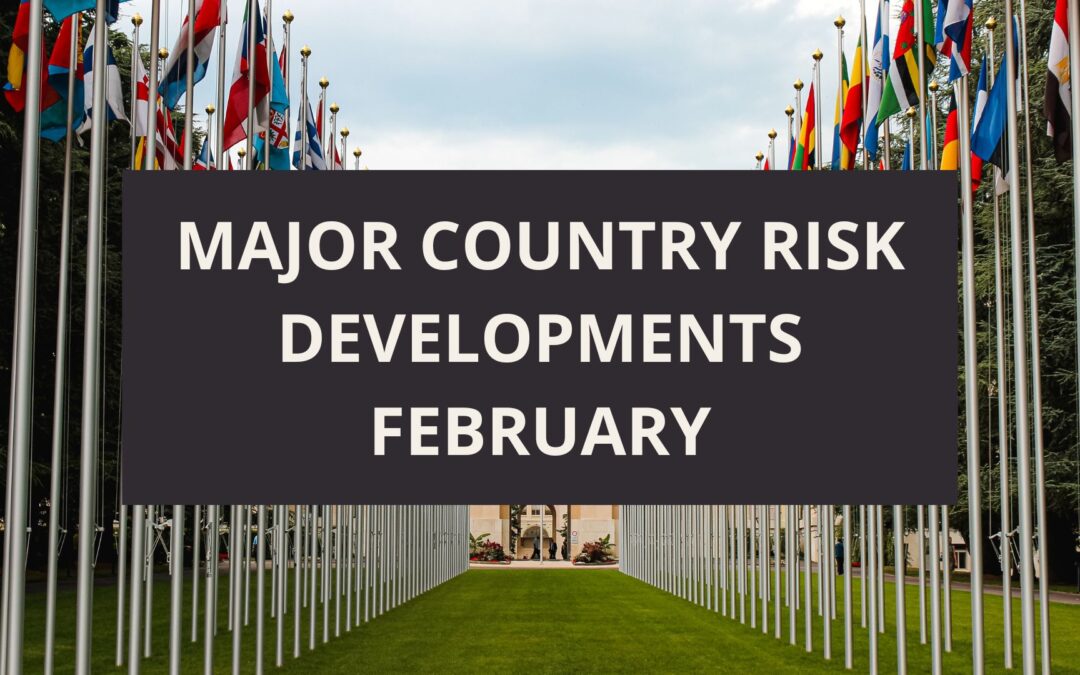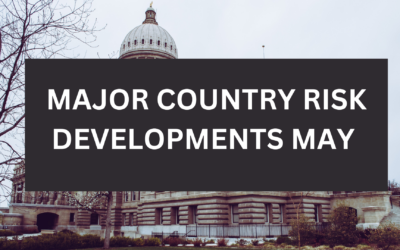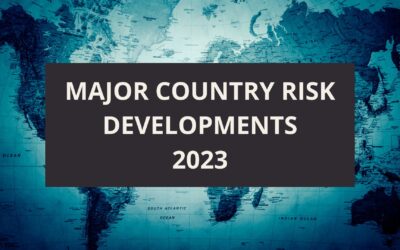Overview
Federal Reserve has dialed back on the pace of interest rate increases in its ongoing fight to tame inflation. The move comes amidst evidence that inflation has slowed in the U.S. and Europe from peaks reached last year. Economic activity has slowed as consumers pull back on spending [or become more selective in shopping decisions]. Of significance, is that while inflation may have peaked, raw material and input prices remain generally elevated – with no indication of an early reversal.
The U.S. posted its largest trade deficit on record in 2022. U.S. imports exceeded exports by $948.1 billion, an increase of 12.2% over 2021. During the final two quarters as global trade slowed, U.S. imports of goods and services fell. Weaker demand for U.S. goods such as industrial supplies and consumer products contributed to a 0.9% decline in exports. The lower U.S. imports late in the year reflected slowing consumer spending. Recent reports have painted a mixed picture. U.S. manufacturing output and home sales fell in December but hiring surged in January and GDP grew a surprising 2.9% in the fourth quarter.
U.S. import growth slowed last year compared to 2021 as consumers spent less overall on goods such as home fitness equipment and furniture which boosted spending on services such as travel and restaurant meals.
U.S. exports of petroleum products and liquefied natural gas boomed after Russia’s invasion of Ukraine led to sanctions on its energy products. Also, Americans flocked to Europe [and elsewhere] as international travel reopened, taking advantage of the strong dollar. The sharp slowdown in the U.S. housing market has reduced demand for shipments of furniture, kitchenware, and lighting.
Global shipping demand has slowed since November after retailers amassed excess inventory. Globally, many are reporting excess supplies on hand.
Sentiments in Europe have adjusted since December, with a consensus expecting the region to escape a recession this year. That is because energy prices have dipped from recent peaks due to adequate reserves and a much milder winter than anticipated.
Furthermore, generous government support provided to households and companies to cushion an expected price spike kept confidence afloat.
Both the Federal Reserve and the European Central Bank (ECB) have continued raising interest rates, but at smaller increments. The consensus is that the tightening cycle that begun in 2022 will likely be concluded by year-end 2023. We doubt that central banks will begin cutting interest before early 2024.
Eurozone consumer prices rose at an annual rate of 8.5% in January, down from 9.6% in December and well below the record high of 10.6%, hit in the year to October. However, core inflation, which excludes changes in food and energy -and is considered a better measure of underlying inflation- remains unchanged at an all-time high of 5.2%. Headline inflation is slowing in most advanced countries, reflecting the easing of global energy costs. Meanwhile, price pressures in the services sector are expected to remain elevated for months to come.
Trade also fell in Europe at the end of 2022, reflecting weakening domestic and overseas demand. German imports of goods fell by 6.1% in December while exports fell by 6.3%. In France, imports were 1.9% lower in the fourth quarter, while exports were down 0.3%
While the fall in headline inflation is welcome, the Federal Reserve, the ECB, the Bank of England, and Bank of Canada officials remain vigilant about bringing down elevated core inflation. The central banks will need to see solid evidence of consistent cooling of price pressures before ending the cycle of rate hikes. We project that such evidence may be unlikely before the end of 2023.
Separate data on labor markets show that Eurozone and U.S. employment levels remain resilient. Even with a number of recent layoff announcements in the technology sector, U.S. unemployment fell to 3.4% (a level not seen since 1969).
Eurozone unemployment remained unchanged at 6.6% across the bloc, (the lowest level since records began in 1995). German manufacturing held up much better than expected in the final quarter of 2022. Output at factories rose in November and December, boosting hopes of a milder economic slowdown in the eurozone. Unemployment also fell in Italy, France, and Spain.
The new data helped the euro gain almost 1% against the dollar, its strongest level in six months. Estimates for eurozone growth have been upgraded on the back of better than expected weather conditions which eased demand for gas causing declines in wholesale gas prices. More investors and businesses are increasingly expecting a mild recession, or the possibility that Europe could avoid a recession this year.
Meanwhile, fertilizer and crop prices have fallen sharply since their peaks after last year’s Russian invasion of Ukraine. Yet, agricultural specialists warn that the world’s food supplies are still under threat. Food prices were already elevated before Russia’s full-scale invasion a year ago, due to droughts and pandemic-related hoarding by governments and businesses.
Last year prices for crop nutrients soared as a result of Russia’s position as the world’s largest fertilizer exporter, while the jump in natural gas prices, a critical ingredient for nitrogen fertilizers, also piled pressure onto agricultural markets.
The Black Sea grain deal between Russia and Ukraine brokered by Turkey, played a crucial role in subduing prices, along with plentiful supplies from Russia; and lower natural gas prices have calmed fertilizer prices. However, it is important to note that this Black Sea grain deal could unravel, and volatile energy prices and climate change also could undermine crop production. The most immediate danger is the UN-backed grain deal, which is due to be renewed in March. Any failure to extend it would block exports of Ukrainian grain, sending prices through the roof again.
While many crops, along with fertilizers, are exempt from sanctions imposed on Russia by Ukraine’s allies, many banks, insurers, and logistics groups have been reluctant to handle Russian farm produce. Relatively low grain inventory levels have added to concerns about global food supplies. For wheat, the stock-to-use ratio shows projected stocks for the end of the crop year in June at 58 days, the lowest level since 2008, when international food prices soared after droughts and an increase in global energy prices. Because of the low global stock situation, prices will remain volatile and could even head higher if a drought or significant weather event emerges in the spring.
Currency movements are also important for food supplies in many developing countries. Despite recent declines in food prices on international markets, the strength of the dollar is likely to keep costs in local currencies high. That means food inflation for consumers will likely persist in 2023, due to the lag for internationally traded prices to work their way through to retail supply chains. A record wheat crop in Russia and bumper corn, and soybean harvests in Brazil have relieved tightness in international grain and vegetable oil markets, while recent fall in the price of natural gas, a feedstock, has increased production of nitrogen crop nutrients. Cheaper international prices, including for fertilizer, will likely remove some of the pressure on growers.
The shocks of the past three years have hit lower-middle income developing countries hard. The world’s poorest countries are threatened. According to the IMF, about 15% of low income countries are already in debt distress and an additional 45% are at high risk of debt distress. Sri Lanka, Ghana, and Zambia are already in default. Many more are expected to follow. The terms of borrowing (low interest rates) were attractive but risky. Then came Covid-19, with soaring energy and food prices, higher interest rates, a strong dollar and a global slowdown which have now rendered the costs prohibitive. That is where several of these vulnerable countries now find themselves.
When debt becomes unaffordable, it needs to be restructured. But restructuring has become even more difficult than it was in the 1980’s, following the Latin American debt crisis in 1982. Back then, the main creditors were a few western banks, western governments and western-dominated institutional financial institutions. It was then relatively easy to coordinate between these entities.
Between 2000 and 2021, the share of public and publicly guaranteed external debt of low and lower-middle income countries owed bondholders jumped to 50%, while the share owed to China rose from1% to 15%. Meanwhile, the share held by 22 predominantly western members of the Paris Club of official lenders fell from 55% to 18%. Therefore, coordinating creditors in a comprehensive debt restructuring operation has become much harder, because of their greater number and their diversity. No one wants to restructure debt owed to themselves if that would merely benefit other creditors, not the country itself.
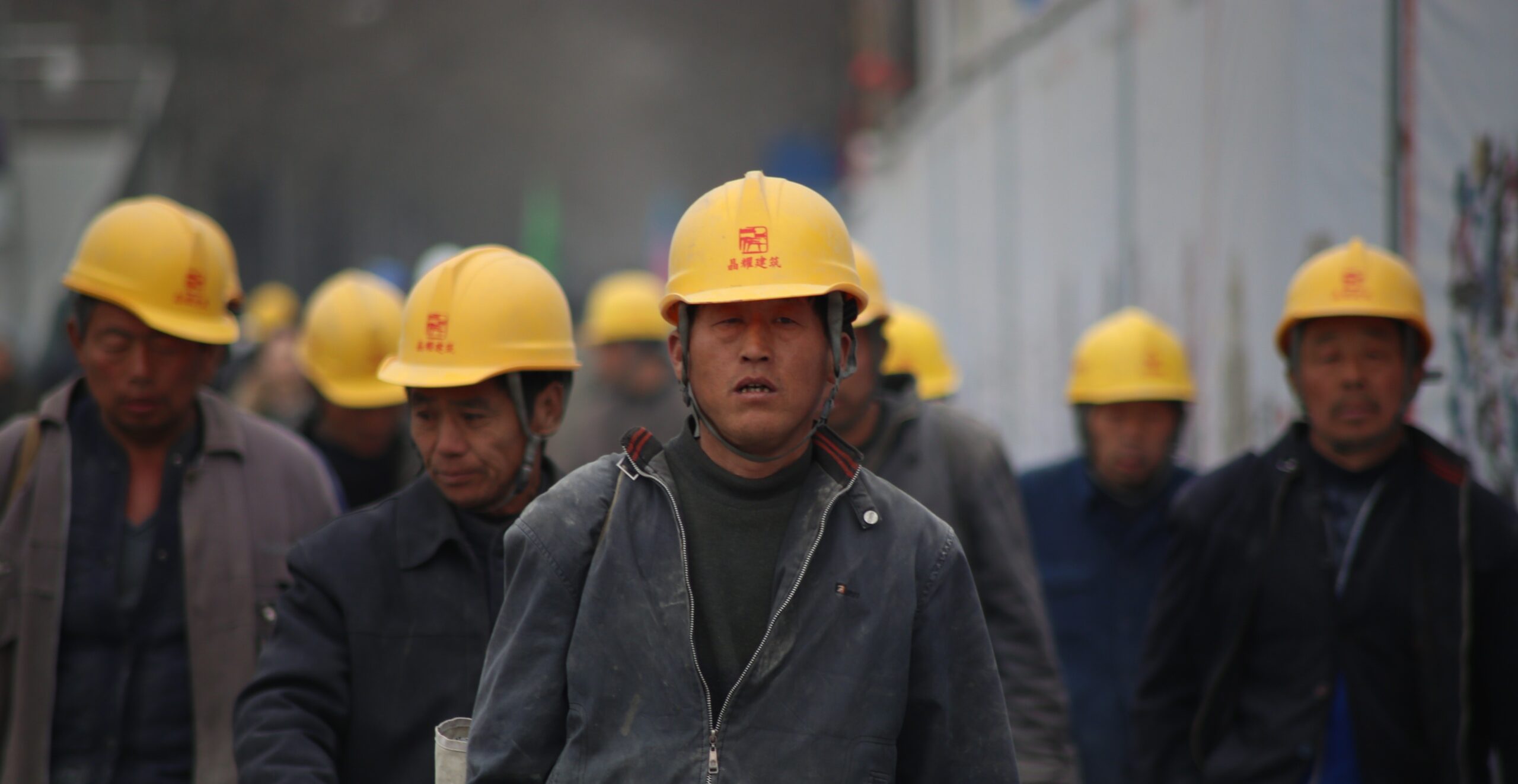
China
China’s export boom that propelled the world’s second-largest economy through much of the pandemic has sputtered. China’s exports to the rest of the world fell 9.9% in December compared to a year earlier. This was a steeper decline than the 8.7% drop recorded in November and reverses a long spell of surging exports earlier in the pandemic as Western consumers snapped up electronics and other consumer goods while working remotely Chinese exports in 2022 were 7% higher than a year earlier, at $3.6 trillion. That marked a slowdown from double-digit percentage gain in 2021. That has reinforced concerns that China will no longer be able to count on robust trade to power growth in 2023. Chinese authorities expect to kick-start economic growth this year after lifting its stringent Covid-19 restrictions. They face a challenge: Chinese citizens borrowed less and saved more last year and it is not clear how long it will take to return to free-spending ways. Individuals in China took out the equivalent of $564 billion in new loans in 2022, down more than half from 2021, marking the lowest total since 2014 according to government data. The huge decline was largely due to fall in home sales, which translated into lower demand for new mortgages. Everyday consumer spending also took a hit during lockdowns that affected many Chinese cities, reducing the need for short-term borrowing. Consumers, instead, accumulated cash, pushing new household deposits in China to a record high of more than $2.6 trillion in 2022. With few attractive investment options – the country’s stock market had another lackluster year- some homeowners used their excess cash to repay their mortgages instead of making big purchases Any major shift in Chinese consumer behavior will have broad implications for the banking and consumer goods sectors. Although a rise in deposits means Chinese banks are getting a cheaper source of funding, the slowdown in borrowing will hurt their net interest margins, the difference between what banks charge for loans and pay for deposits. Companies, including online retailers and travel companies are expecting a pickup in consumption this year following a difficult few years. Since Chinese authorities allowed people to move around again late last year, retail spending and travel have started to rebound. During the recent Lunar New Year holiday, Chinese families spent more on travel, movies, and food from restaurants, according to private and public data. However, with economic uncertainties continuing, big ticket purchases such as real estate will take longer to recover. The higher savings and lower borrowing rates and a lack of consumer confidence could continue to hold back spending. Both consumer and business confidence fell in the past year. With uncertainty about the future the tendency is to save. When the Chinese government brought an end to its strict zero-Covid policy and unveiled a series of measures designed to help revitalize the real estate sector between November and December, stocks jumped in anticipation of a recovery. However, there is a growing consensus that it will take until the third quarter for consumption to recover to near pre-pandemic levels. Some fear that the generation of Chinese consumers who emerge from the pandemic may have similarities to Americans who experienced the Great Depression. They could develop a long-term shift in their desire to save more. If that were to occur, we could see weaker Chinese GDP growth going forward -than many anticipate. A survey from the People’s Bank of China conducted late last year, show that half of the respondents felt uncertain about their job prospects, while a quarter said their incomes had decreased. The same survey, which covered 20,000 depositors in 50 cities across China, asked whether people prefer to save, spend or invest. Around 62% of the respondents chose saving, 23% picked spending and only a sixth intended to invest more. Fading western demand and China’s zero-tolerance approach to Covid-19 outbreaks through last year took their toll on overseas sales by other leading Asian export countries last year. South Korea’s exports in December were 9.6% lower than a year earlier, while exports from Taiwan were down 3%. Meanwhile, Japan’s exports in December grew 11.5%. aided by a steep fall in the yen against the dollar and other major currencies. Still, that was slower than the near 20% annual growth recorded in November, and sharply below annual growth of close to 30% recorded in September.

Colombia
President Gustavo Petro has completed his first year in office taking a pragmatic policy approach that helped him make some progress on his campaign agenda. This included significant political reforms aimed at fighting corruption. The success in pushing forward the reforms served to consolidate the position of the ruling Pacto Historico (PH) coalition as a political force to be reckoned with going forward. Local parliamentary elections, scheduled for October 29, 2023, will likely complicate governability. The ruling PH and the centrist parties that support the president in Congress, will each put forward their own candidates, which will likely weaken President Petro’s large working coalition. However, if the government’s proposals for political reform is approved, the PH should find itself in a stronger position ahead of the polls, having attracted credible legislators from other parties who may wish to stand in municipalities with large budgets. The orientation of Colombia’s international relations is shifting under the Petro government. The president has tried to remain on good terms with the U.S. (historically Colombia’s main ally in the region). However, some aspects of his agenda–such as the restoration of diplomatic relations with Venezuela in order to re-establish bilateral trade and improve security conditions along their shared border–may raise tensions with the U.S. That is uncertain since the U.S. itself appears to be shifting its attitude toward the Venezuelan regime of Nicolás Maduro (in order to access Venezuelan oil). On the other hand, unlike many countries in Latin America, Colombia is unlikely to seek any stronger ties with China, as it will not want to put its relationship with the U.S. at risk. The sitting Petro government is focused on expanding the state’s role in the economy via a more progressive tax regime, higher social spending, greater state intervention and increased protectionism. One priority is to compensate poor families whose incomes are being squeezed by current high inflation rates, by raising the value of monthly government cash transfers. Inconsistent statements by members of Mr. Petro’s ideologically heterogeneous cabinet will cause uncertainty regarding the direction of policymaking in the near term, but the president is likely to maintain a fairly moderate stance and policy changes will be less radical than his campaign promises suggested. With regard to prospects for economic growth in 2023, it appears that a combination of domestic monetary policy tightening, and persistently high inflation will push Colombia into a technical recession (GDP expected to contract in the last quarter of 2022 and the first quarter of 2023). While the Petro’s government continuing pragmatism should bolster political stability, the policy outlook is uncertain, and when coupled with tax increases, will tend to keep gross fixed investment subdued this year. The expectation is that unfavorable international economic conditions will contribute to domestic growth slowdown, from an estimated 7.9% GDP expansion in 2022 to growth of only 1.6% in 2023. However, upward revisions to global and Chinese growth for 2023 should see stronger than expected demand for Colombian exports. Moreover, a 16% increase in the minimum wage for 2023, which is higher than was expected, will help support private consumption. The more benign global outlook and the boost to household spending from the higher minimum wage have led to a less pessimistic view of Colombia’s GDP performance in 2023. The inflation rate reached 13.1% in December (the highest level for more than 20 years), driven mainly by higher food prices – surpassed most expectations. The 16% minimum-wage increase this year, will add to the trend of increasingly entrenched price pressures which will complicate the task of achieving disinflation any time soon. Should price pressures begin to subside as the effects of monetary tightening become apparent later this year, and as private consumption decelerates more sharply, we will likely see inflation begin to retreat towards year-end. The forecast is for 2023 year-end inflation of around 12%. The best case expectation is that it will take until end-2024 for inflation to approach the central bank’s 3% target [which is unlikely to be met before 2025]. Currency volatility, high oil prices and continuing global supply-chain bottlenecks pose risks to the inflation forecast. Interest rates easing may begin in the second half of 2023. Exchange rate volatility is likely over the near-term, and markets have already priced in higher interest rate risk under the Petro government. Based on this assumption and on the expectation that Colombia’s wide fiscal and current-account deficits will narrow (albeit gradually), the peso is expected to strengthen only modestly this year, from an estimated Ps4,700:US$1 at end-2022 to Ps4,662:US$1 at end-2023. Assuming that the country’s twin deficits continue to narrow, and that other macroeconomic forecasts materialize (including a gradually weaker U.S. dollar), the peso could strengthen to around Ps4,150:US$1 by end-2027. Colombia’s large current-account deficit remain a source of vulnerability and contributes to currency depreciation pressure. Despite windfall oil income, the deficit is expected to remain sizeable in the near term at least. Although the trade deficit will narrow in 2023, the combination of profit remittances by firms (mainly in the oil sector) and weaker inflows of workers’ remittances amid a U.S. slowdown could prevent a sharper narrowing of the overall current-account deficit, which will remain large, at 4.6% of GDP in 2023 (against an estimated 5.6% of GDP in 2022). Over the medium term, inflows of workers’ remittances will recover (as U.S. economic growth picks up in 2024-27) and profit remittances should ease, helping to narrow the current-account deficit gradually, to 3% of GDP over the next 4-years. Nonetheless, a strong (albeit diminishing) cushion of foreign exchange reserves, Colombia’s flexible credit line with the IMF, continued access to international markets and reasonable foreign direct investment inflows, will limit the country’s external risks. Furthermore, a pick-up in demand for Colombia’s exports is anticipated in 2023-24, assisted by China’s anticipated recovery.

Peru
Widespread anti-government protests are disrupting copper output in Peru, the world’s second largest producer. This has triggered predictions of a possible surge in copper prices which has already rocketed in recent months as China’s resource-dependent economy reopens. Demonstrations demanding early elections and the resignation of interim President Dina Boluarte have thrown up roadblocks across the country and attacked mines, causing production slowdowns and closures in Peru’s copper operations. The country accounts for 10% of global copper supplies. Copper [which has a wide variety of applications, including electricity cables and electric car production] prices have jumped to $9,000 per ton in three months. The abrupt end to draconian Covid restrictions in China, boosted demand for the metal. The recent supply snags in Peru could provide fresh upward impetus for prices to climb further. The situation appears to be getting worse, with production losses expected to escalate rapidly. This is considered the first flare up in Peru’s longstanding issues with the mining industry, and it seems likely that volatility could take copper prices as high as $12,000 per ton, according to industry strategists. A political crisis that has long been percolating – Peru has had six presidents since 2018- is now boiling over following leftist president Padro Castillo’s removal from office on December 7th – after he attempted to close congress and rule by decree. Boluarte, who served as his vice-president, was sworn in hours later. Much of the unrest has been focused in the copper-rich south, where Castillo – viewed as a champion for the rights of indigenous and rural communities remains popular for his opposition to large-scale natural resources companies. Peru is also a large producer of gold, zin, and tin. The miner Buenaventura suspended operations at its silver mine after protesters broke in. Another mining company reports that mines, especially those located in Peru’s south, are running out of supplies such as explosives and steel. They also report being unable to refresh their workforces because of the disruptions and acknowledge that copper exports are now below where they were just two or three months ago. Key mines have had to suspend operations. Glencore’s Antapaccay mine, which produced 170,000 tons of copper concentrates in 2021, temporarily suspended operations after it was attacked by protesters in late January. Chinese-owned Las Bambas mine – responsible for 2% of global production, halted output without a restart date because of transport disruptions which hit critical supplies. Freeport-McMoRan, which operates Cerro Verde, Peru’s largest copper mine, acknowledged that it had reduced ore extraction by 10-15% per day in a bid to conserve supplies critical to keeping operations running. Global copper supply suffered a disruption rate – the amount of supply lost versus forecasts of 6.3%, compared with the usual average of 4-5%. The rate for Peru was 12%. Moody’s switched its outlook for Peru’s sovereign debt from stable to negative, though it affirmed the country’s investment grade rating. The rating agency said the sustained unrest would affect investor confidence, undermine growth, and complicate fiscal management. Expectations are that the economy could slip into recession by the final quarter of 2023. Agricultural businesses have also been hurt by the protests, with the country’s leading industry association estimating that $300 million in exports have been lost since protests began in December. Peru is a major exporter of grapes and blueberries.
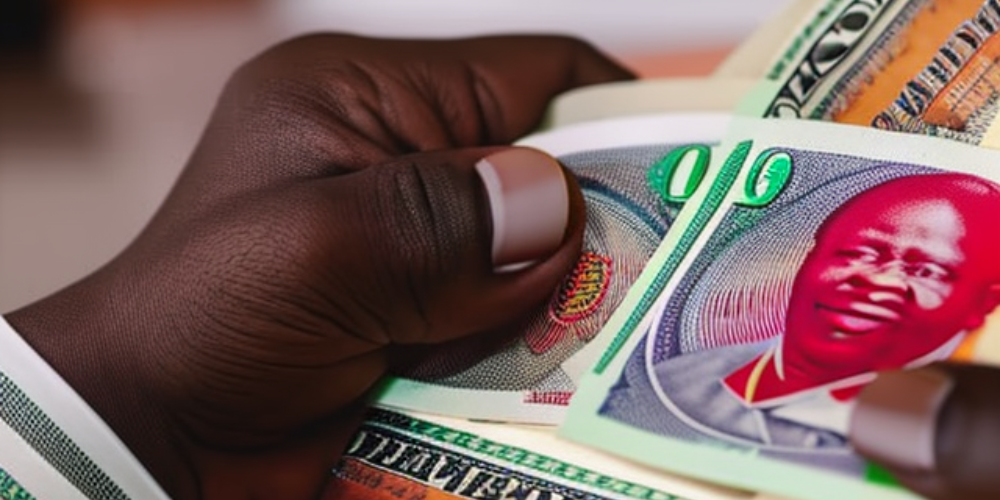
Nigeria
The country’s highest court and the IMF have weighed into a botched plan to replace Nigeria’s largest currency notes. The rollout has caused chaos across the country just weeks ahead of a crucial general election. The Supreme Court slapped a temporary ban on the enforcement of the current deadline to replace the naira N200, N500 an N1,000 notes on February 10, pending the hearing of a lawsuit brought by three northern states challenging the new currency design. It adjourned that hearing until February 15. The central bank, which is overseeing the introduction of the new notes, has already had to extend the deadline to swap the old currency after shortages of the notes led to huge lines at banks across the country. The IMF is calling on Nigeria to allow more time to complete the process, noting the problems with the rollout. The three states took the federal government to court, arguing that the scarcity of new notes was causing severe hardship and stating that there had been insufficient time to complete the process. The states argued that economic activities were grinding to a halt as a result of the currency redesign. The court order is the latest twist in the chaotic rollout first announced late last year. The central bank announced at the time that the new notes would be more secure, prevent counterfeiting and allow Nigeria to move to a more card and electronic payment-based economy. The notes were unveiled in October but the central bank only started supplying them to commercial lenders in December, leading to shortages across the country where most transactions are in cash. The original January 31 deadline for old notes to cease being legal tender had already been extended by 10 days before the Supreme Court’s ruling. Long lines have formed outside cash machines and scuffles have broken out in banking halls as customers reportedly jostled to withdraw money ahead of the deadline. There have been protests in parts of the country amid frustration over the unavailability of the new notes. Bank executives report that they have not been supplied with enough naira to replace the old notes that have been collected. Nigerian anti-corruption agencies have alleged that some banks are hoarding the new currency. Meanwhile, Nigeria braces for its presidential elections to take place on February 25. A team of western educated analysts and economists based in Lagos, are now fine-tuning a data system aimed to bring evidence-based insights into the complex electoral races – where official data is deemed to be so unreliable that no one seems to know exactly the size of the population. Election polling has been done before in Nigeria, but usually in the form of surveys commissioned by political parties and other organizations for internal use. In this election cycle at least two data specialist firms are aiming to fill a gap in the market for high-quality, publicly available information. Surveys covering big issues, such as the proposed removal of fuel subsidies, would help Nigeria’s leaders in decision making. The intent is to be able to do polling on any difficult decisions the next government may have to take. There is a growing awareness that public policy and private industry need to know what the Nigerian public is thinking about national issues- before taking decisions that will affect them. By Byron Shoulton, FCIA’s International Economist For questions / comments please contact Byron at bshoulton@fcia.com
Recommended News
Major Country Risk Developments May 2023
Posted with permission from greatamericaninsurancegroup.com Overview There appears to be developments on the...
Top 5 Benefits of Trade Credit Insurance
How does trade credit insurance work? Trade credit insurance is a type of insurance that protects businesses from the...
Major Country Risk Developments January 2023
Posted with permission from greatamericaninsurancegroup.com Overview The global economy faces several uncertainties in...

